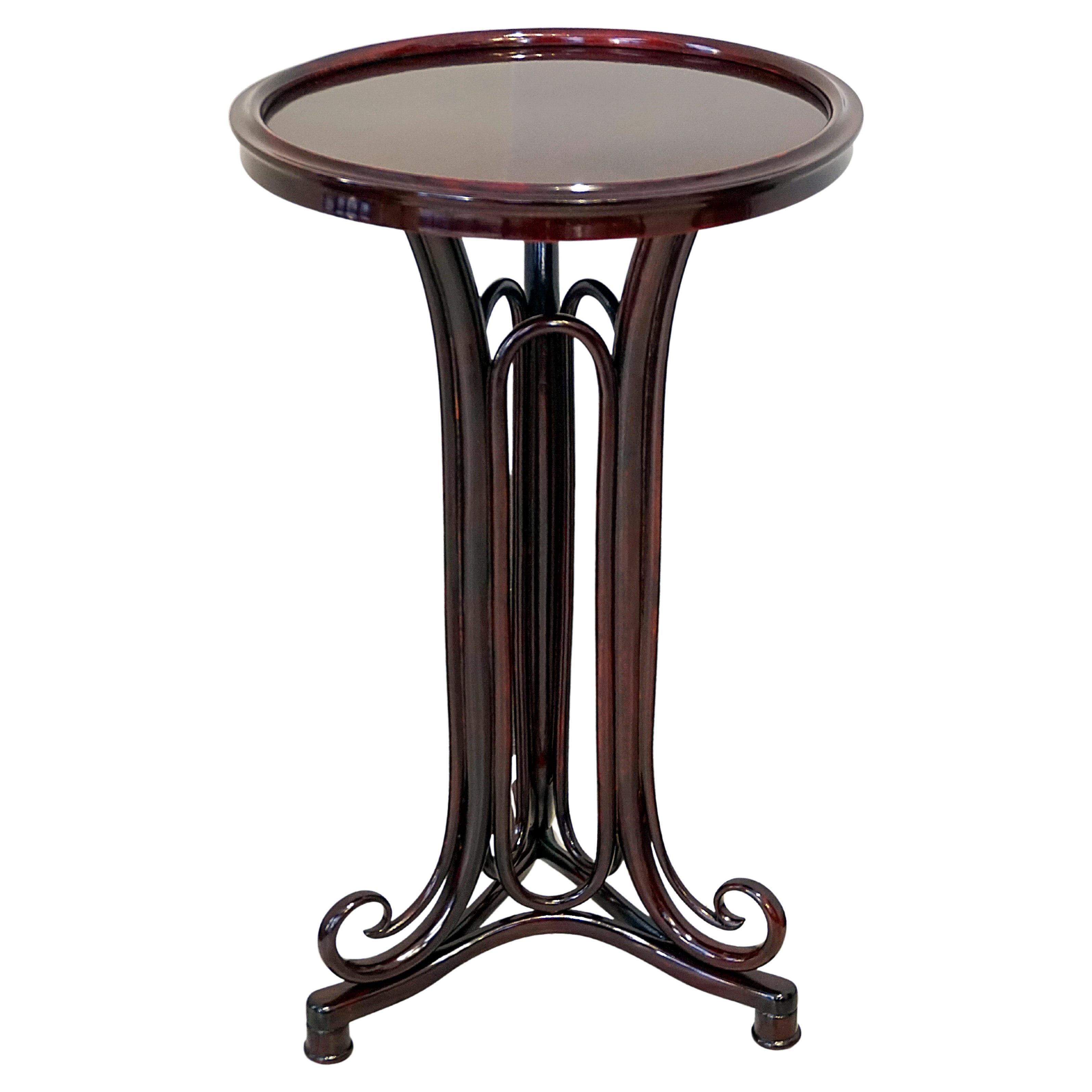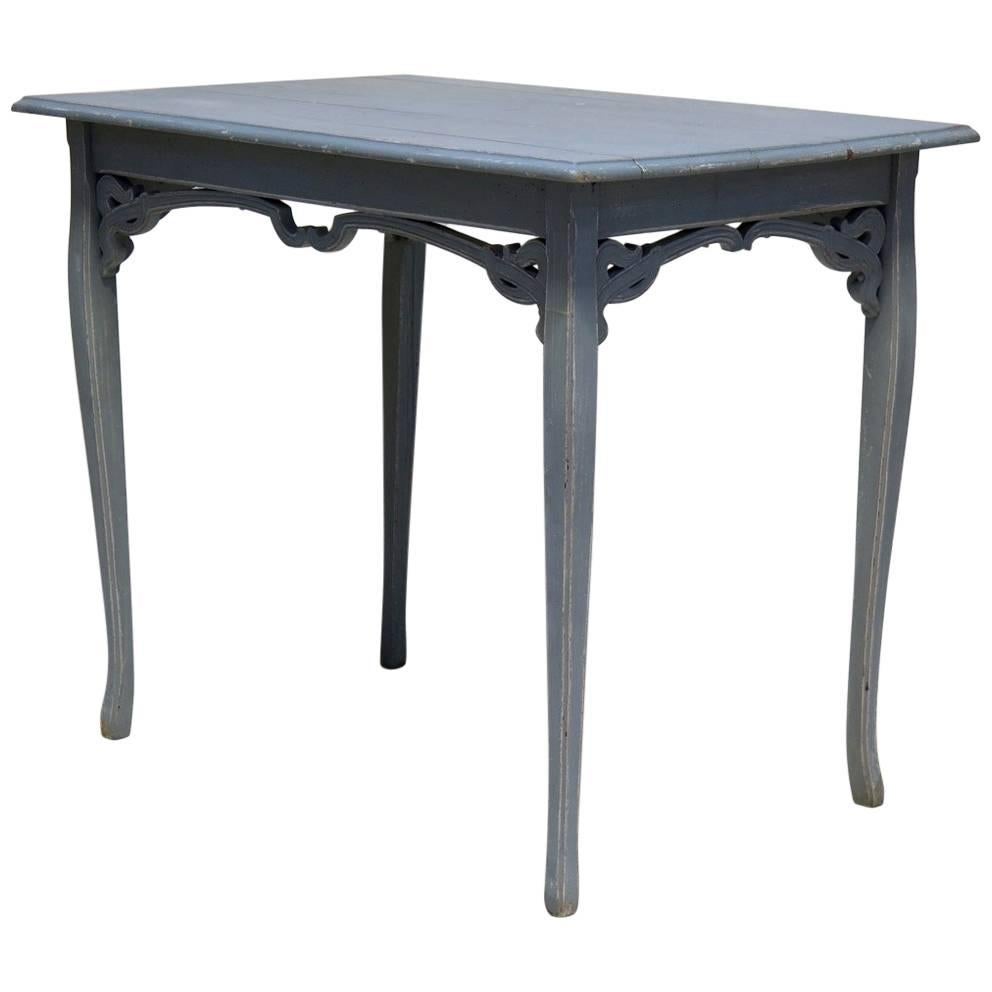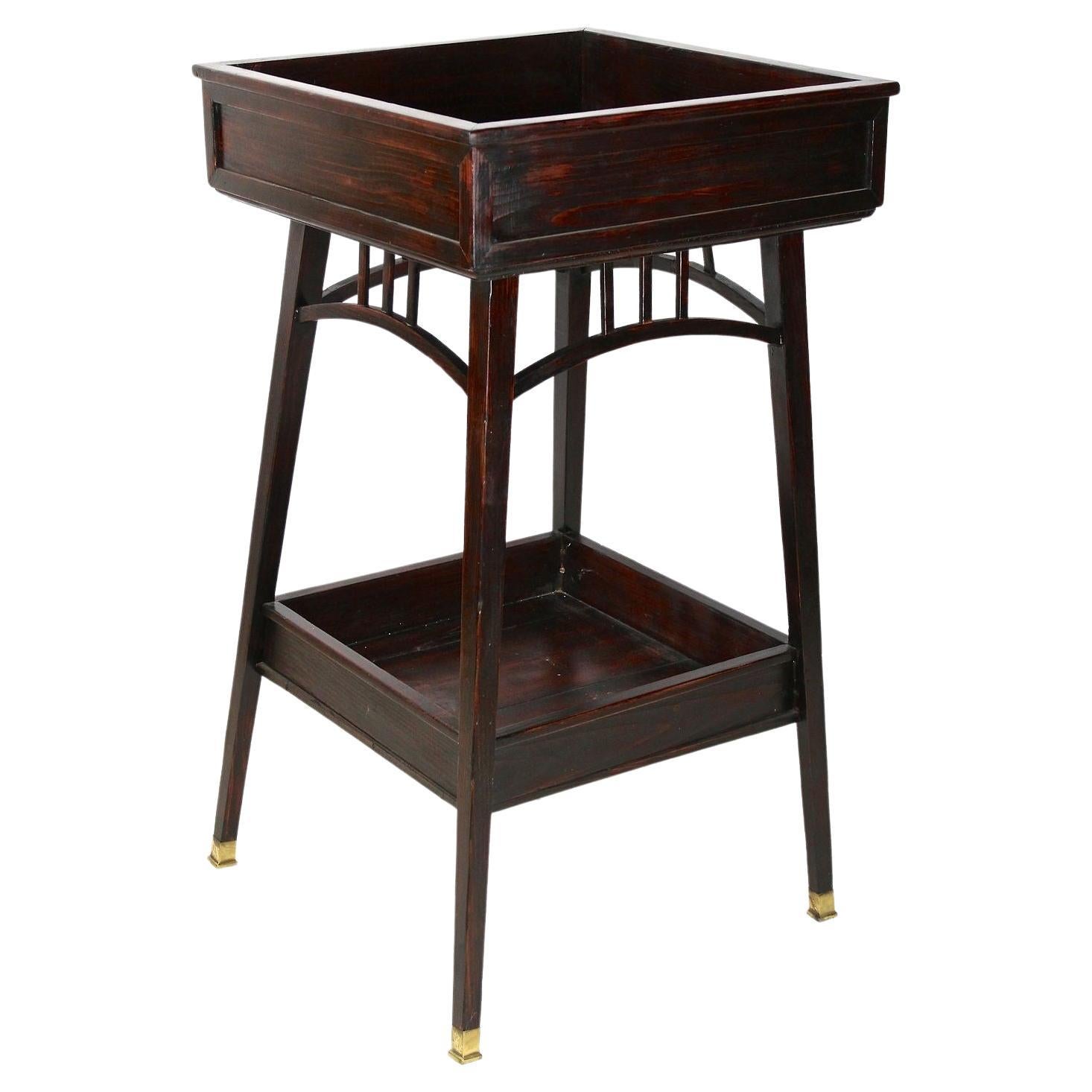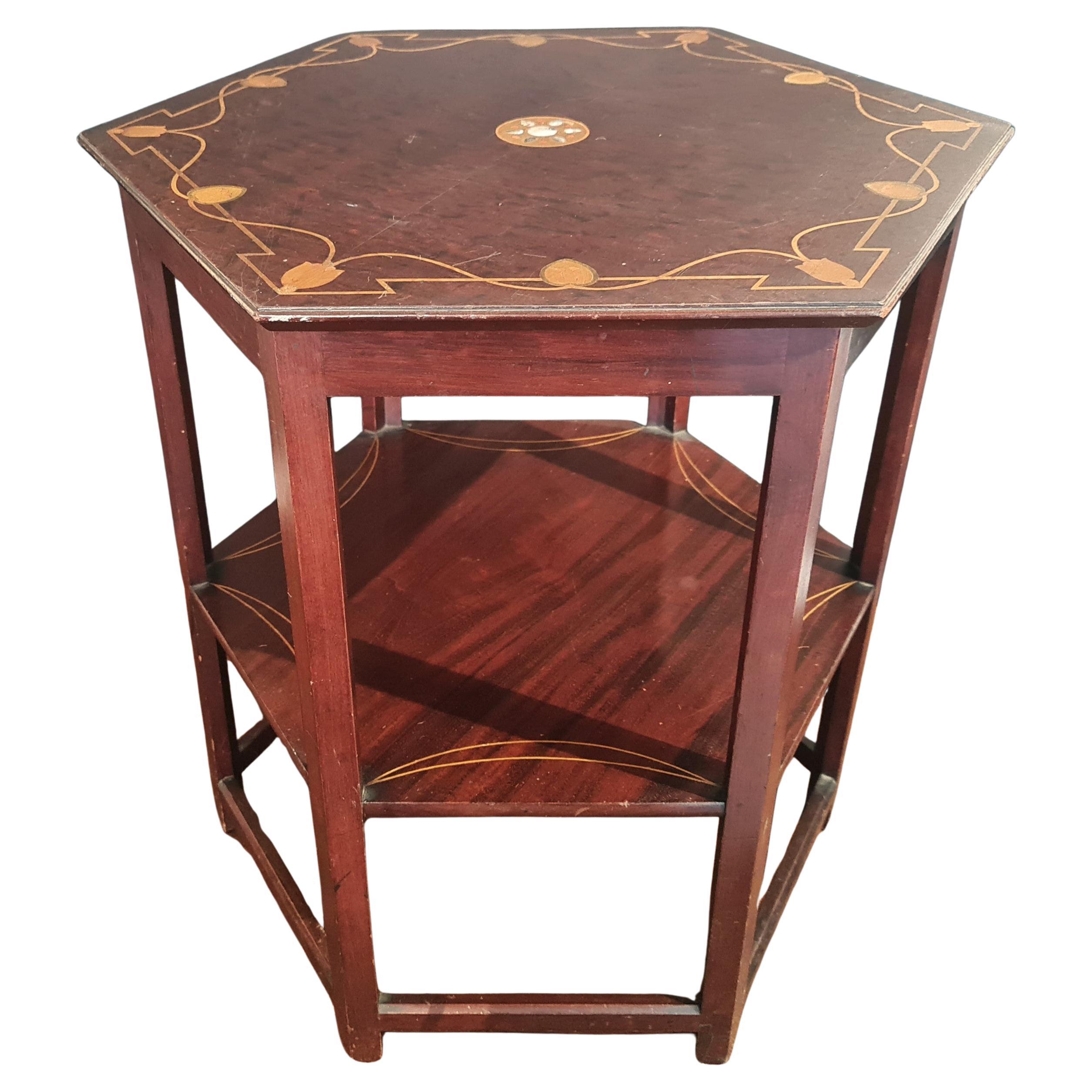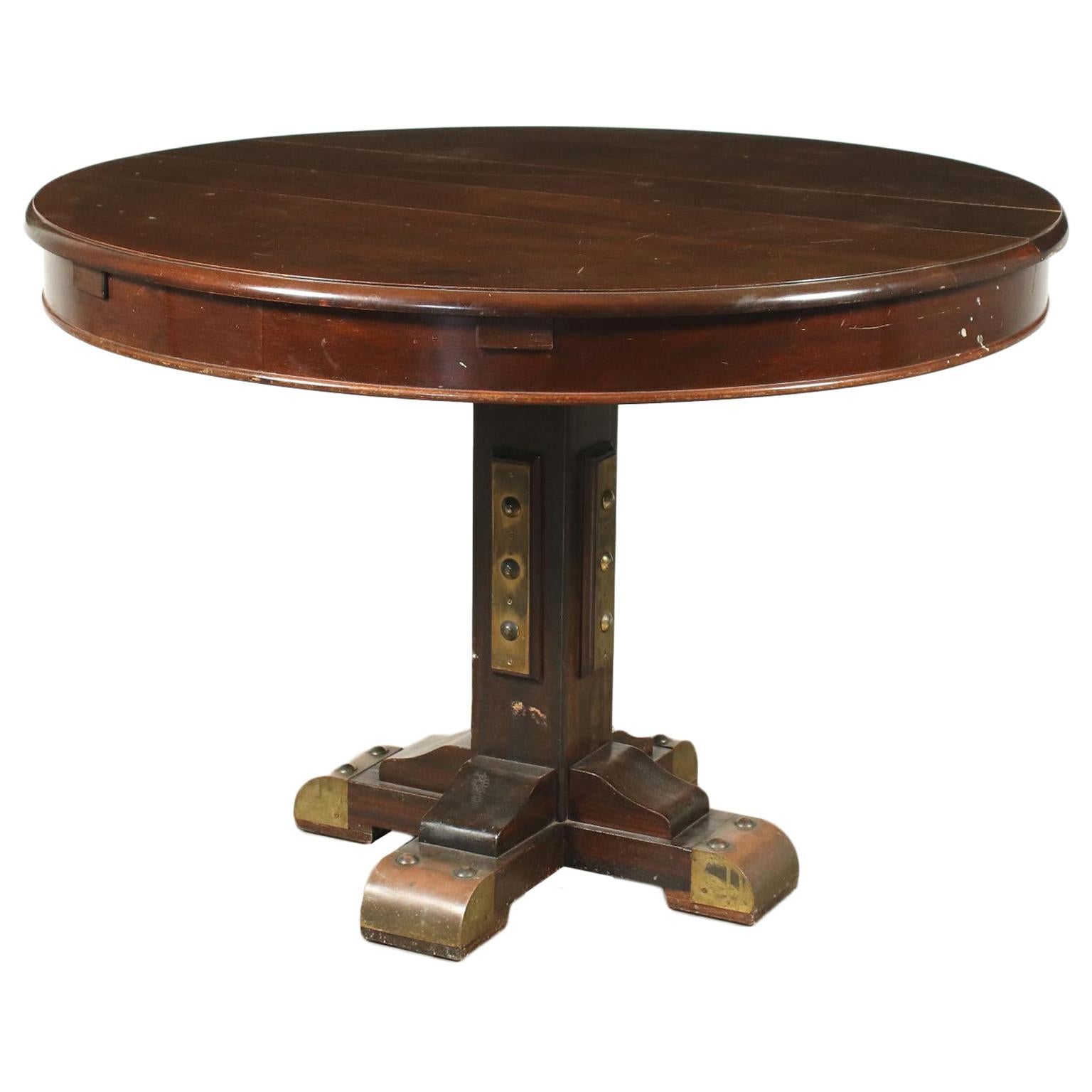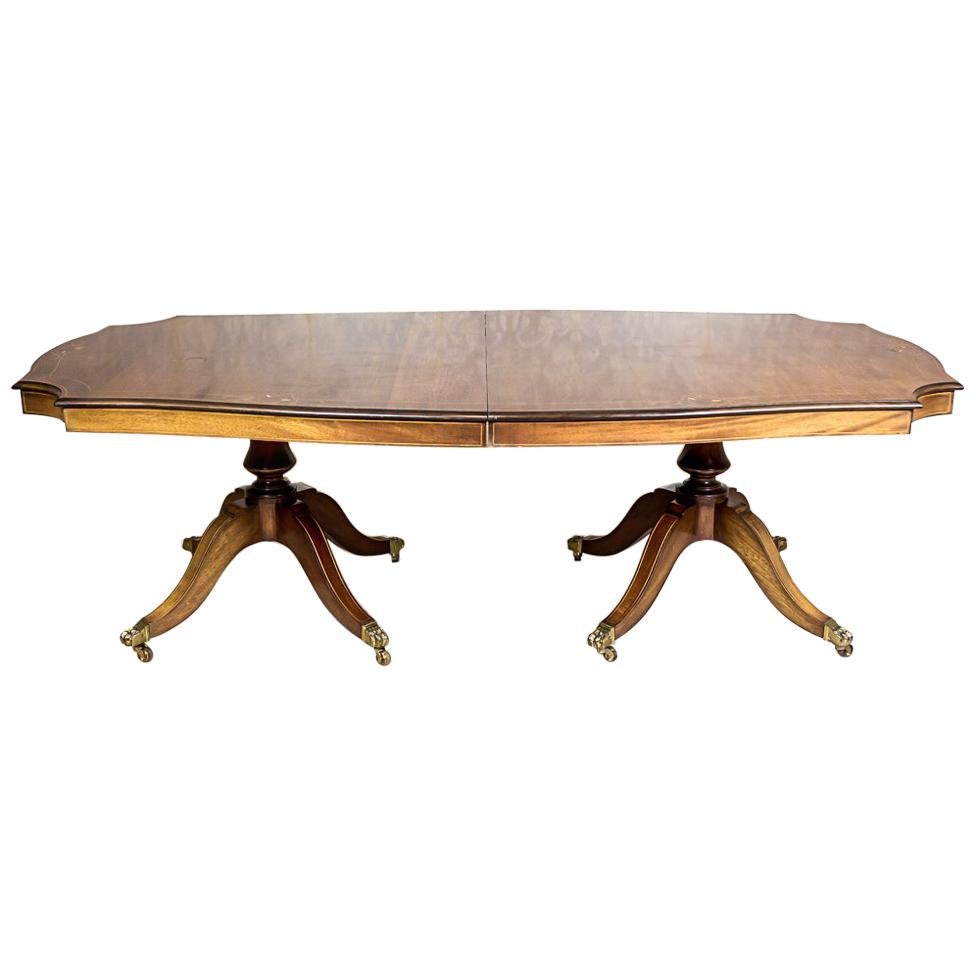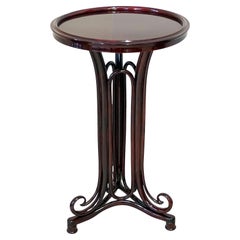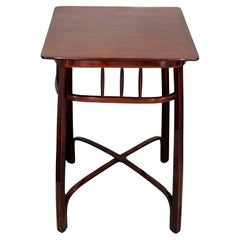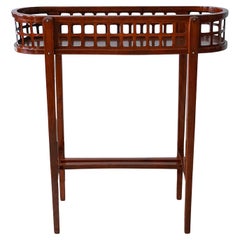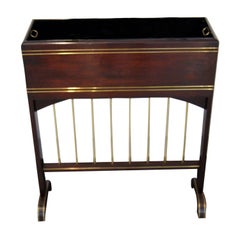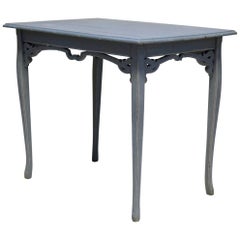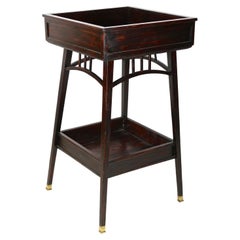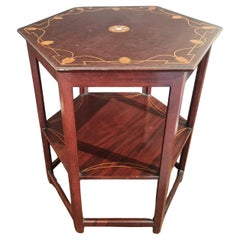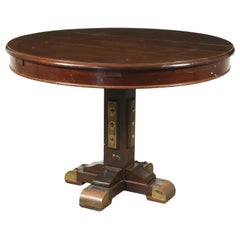Items Similar to Art Nouveau Table Rarity Beechwood Mahogany Massive and Veneer Vienna circa 1905
Want more images or videos?
Request additional images or videos from the seller
1 of 7
Art Nouveau Table Rarity Beechwood Mahogany Massive and Veneer Vienna circa 1905
About the Item
Art Nouveau table, made of mahogany wood: Mahogany massive and veneer (table's plate) / high quality handwork.
It is of most elegant appearance: The oval table's plate is attached to fluted pair of columns which is based on oblong support covered with fittings made of brass. The excellent veneer of table's plate is a most remarkable peculiarity of this piece of furniture!
Vienna, made circa 1905.
Original vintage furniture deriving from manufacturing period!
Measures:
Height: 28.93 inches.
Measures of table's plate: 41.33 x 25.98 inches.
In excellent condition (ready for use)!
- Dimensions:Height: 28.93 in (73.49 cm)Width: 41.33 in (104.98 cm)Depth: 25.98 in (65.99 cm)
- Style:Art Nouveau (Of the Period)
- Materials and Techniques:Beech,Mahogany,Stained
- Place of Origin:Austria
- Period:1900-1909
- Date of Manufacture:circa 1905
- Condition:READY FOR USE.
- Seller Location:Vienna, AT
- Reference Number:1stDibs: LU101445594583
About the Seller
5.0
Gold Seller
Premium sellers maintaining a 4.3+ rating and 24-hour response times
Established in 1988
1stDibs seller since 2013
299 sales on 1stDibs
Typical response time: 1 hour
- ShippingRetrieving quote...Shipping from: Vienna, Austria
- Return Policy
Authenticity Guarantee
In the unlikely event there’s an issue with an item’s authenticity, contact us within 1 year for a full refund. DetailsMoney-Back Guarantee
If your item is not as described, is damaged in transit, or does not arrive, contact us within 7 days for a full refund. Details24-Hour Cancellation
You have a 24-hour grace period in which to reconsider your purchase, with no questions asked.Vetted Professional Sellers
Our world-class sellers must adhere to strict standards for service and quality, maintaining the integrity of our listings.Price-Match Guarantee
If you find that a seller listed the same item for a lower price elsewhere, we’ll match it.Trusted Global Delivery
Our best-in-class carrier network provides specialized shipping options worldwide, including custom delivery.More From This Seller
View AllThonet Vienna Art Nouveau Saloon Reading Table No 1 Mahogany Stained circa 1900
By Gebrüder Thonet Vienna GmbH
Located in Vienna, AT
Elegant saloon table with a round, original table top with edging to prevent rolling, decorative and elaborate bentwood struts and applications with volutes on the three-sided foot.
Beautifully designed, handcrafted furniture with bentwood elements, beech, stained mahogany, shellac hand-polished.
Manufactured by Thonet Brothers...
Category
Antique Early 1900s Austrian Art Nouveau Tables
Materials
Beech
J.&J. Kohn Art Nouveau Waiting Table, Mahogany stained, Austria, Around 1905
By Jacob & Josef Kohn
Located in Vienna, AT
Elegant Art Nouveau waiting table, or flower table, on slightly outwardly curved legs, with decorative struts underneath the table top and in the base area.
High-quality handcrafted ...
Category
Antique Early 1900s Austrian Art Nouveau Nesting Tables and Stacking Tables
Materials
Beech
J.&J. Kohn Vienna Art Nouveau Jardinière, Flower Stand, J. Hoffmann, ca. 1905
By Josef Hoffmann, Jacob & Josef Kohn
Located in Vienna, AT
Elegant Art Nouveau jardinière on four high legs, slender elongated shape with rounded ends, the delicate latticework on the wall as the only typical ornament, as Josef Hoffmann like...
Category
Antique Early 1900s Austrian Art Nouveau Planters, Cachepots and Jardini...
Materials
Beech, Bentwood
Art Nouveau Flower Container Mahogany Stained Brass Inlays Vienna, circa 1915
By Viennese Manufactory
Located in Vienna, AT
Viennese Art Nouveau flower container, circa 1915-1920
High quality handwork / beechwood / dark mahogany stained / shellac hand polished
Elegant V...
Category
Vintage 1910s Austrian Art Nouveau Planters, Cachepots and Jardinières
Materials
Beech
Lobmeyr Vienna Signed Art Nouveau Jug Enamel Gold Made after 1905
By J.L Lobmeyr
Located in Vienna, AT
FINE ART GLASS VINTAGE / JUG WITH GOLDEN ENAMEL PAINTINGS
MANUFACTORY: most probably Meyr’s Nephew, Adolf near Winterberg (BOHEMIA)
ORDERER: LOBMEYR VIENNA
SPECIFICATIONS:...
Category
Antique Early 1900s Austrian Art Nouveau Glass
Materials
Enamel
$2,076 Sale Price
32% Off
Art Nouveau Table Lamp 'Vignes Et Escargots', Daum Nancy, France, Circa 1905
By Daum
Located in Vienna, AT
A museum piece of French Art Nouveau glass art:
Lamp with baluster-shaped foot on a stepped, flat, round stand raised in the centre, hemispherical shade, slightly heat-stretched and pressed upwards on four sides, made of multi-layered glass with coloured powder fusions, predominantly in yellow-orange, red, brown, green and blue-violet tones, with highly etched vine leaves and grapevine decoration, two fully sculpted snails on the foot as a special accent, Cameo signature ‘DAUM NANCY’ with Lorraine cross on the foot in the lower area, and on the shade, which rests on a patinated metal mount, which also carries the threads for the light sources, one at the top and one inside the foot.
Technique: Handmade cameo glass
Glass overlaid with several layers, with high-cut worked out motifs. Since the middle of the 19th century, the design has also been done by etching. Cameo glass vessels were already being made in antiquity; cameo glass vessels were already being made in ancient times, and at the end of the 19th century this glass art was further developed,
especially in Nancy.
Manufactory: Daum Frères / Nancy, Lorraine, France
Dating: Circa 1905
Dimensions:
Height: 53,5 cm / 21.06 in
Diameter: 32,0 cm / 12.59 in
Bibliography:
Carolus Hartmann, Glasmarken-Lexikon / Encyclopedia of Glass Marks, Stuttgart / Germany 1997, Signature number 2984 on page 148, and page 561: Daum Frères & Cie, Verreries de Nancy
Condition: Very good
The electrification is functional, but should be renewed for safety reasons.
About the design:
The development of Art Nouveau glass art coincides with a revolution in lighting, the significance of which we can no longer fully appreciate today in the 21st century. Around 1880-1890, oil lamps and paraffin lamps were still almost unrivalled in every household. It was not until the beginning of the 20th century that the ‘electricity fairy’ emerged as a remarkable advance and gradually found its way into the daily lives of all social classes. The glassmakers at the Ecole de Nancy were true pioneers and eagerly seized the opportunity to use electricity to illuminate the colours
applied to the glass. Colour was one of the main concerns of the master glassmakers at the Ecole de Nancy.
Emile and Antonin Daum returned to the colours that had made the stained glass of the Middle Ages so splendid and extended the palette of colours in the glass mass as they needed it for the floral motifs and exact representations of nature. But the modulation of the colours, their arrangement in juxtaposed patches, the technique that the Impressionist painters practised on their canvases at the same time, was difficult to achieve due
to the nature of the glass melted in a large mass.
To achieve this richness of expression, around 1900 Daum developed ‘the process of applying glass powder and enamel to the outside of the vases to create coloured backgrounds or decorative spots’, according to the report of the jury of the 1900 World Exhibition.
The field of naturalistic, contrasting and shimmering colours was one in which Antonin Daum excelled. This new technical process made it possible to create the symphonies of colour that we find on the ‘Vignes et escargots’ lamp...
Category
Antique Early 1900s French Art Nouveau Glass
Materials
Glass
You May Also Like
Painted Art Nouveau Table, France, circa 1920s
Located in Isle Sur La Sorgue, Vaucluse
Pretty painted wooden table, with a carved apron in the Art Nouveau style. The colour is grey-blue.
Category
Early 20th Century French Art Nouveau Tables
Materials
Wood
20th Century Art Nouveau Beechwood Pedestal/ Flower Tub, Mahogany, ca. 1905
Located in Lichtenberg, AT
Unusual early 20th Century Art Nouveau flower tub out of Austria from the period around 1905. Made of beechwood and trimmed to a dark mahogany style, this amazing looking pedestal/ f...
Category
Early 20th Century Austrian Art Nouveau Pedestals
Materials
Brass
English Art Nouveau mahogany inlaid hexagonal table Shapland & Petter
By Shapland & Petter
Located in Tunbridge Wells, GB
Original English Art Nouveay mahogany inlaid hexagonal table attributed to the Barnstaple Cabinet makers Shapland & Petter circa 1900
Category
Early 20th Century British Art Nouveau Tables
Materials
Mahogany
Table Mahogany Brass Mahogany Veneer, Italy, 1950s-1960s
Located in Milano, IT
Table "in Marine Style", mahogany and brass base, mahogany veneer top.
Category
Mid-20th Century Italian Mid-Century Modern Tables
Materials
Brass
English, Extendable Dining Table Veneered with Mahogany, circa 1920
Located in Opole, PL
We present you this big, interesting table in the George III type, composed of two connected segments.
Each segment is supported on a separate corpus that ends with a quadripod, whi...
Category
Vintage 1920s British Tables
Materials
Fruitwood, Mahogany
$2,675 Sale Price
20% Off
Karpen Brothers Mahogany Art Nouveau Desk Writing Table Library Table Circa 1905
By Karpen & Bros.
Located in Long Branch, NJ
Karpen Brothers Mahogany Art Nouveau Desk Writing Table Library Table Circa 1905
Dimensions : 60" Wide X 36" Deep X 30" Tall
This stunning table was made in the early 20th century ...
Category
Antique Early 1900s American Art Nouveau Desks and Writing Tables
Materials
Mahogany
